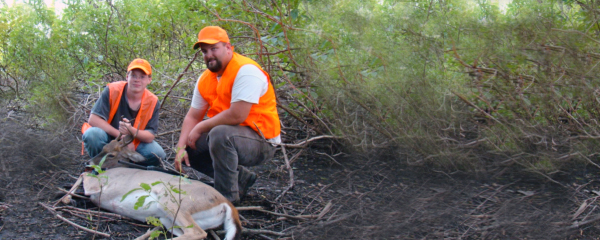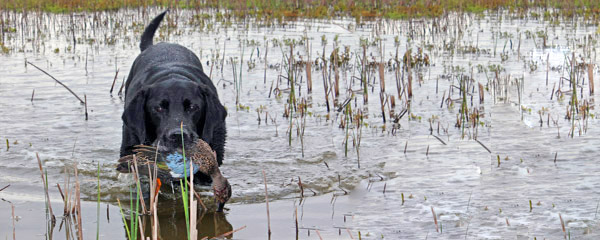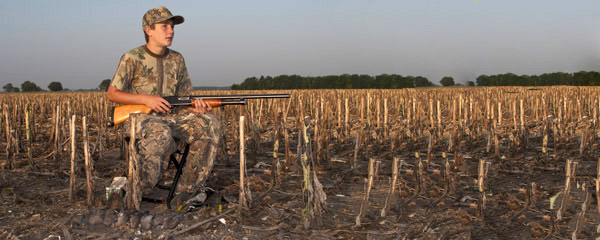Youth and disabled hunters don’t have to be involved in a special hunt to participate in this season, but for first-time hunters, a special hunt may be the way to go
PRATT– There’s a first time for everything, and for youth and disabled deer hunters, Sept. 7 marks the first day of a very special nine-day season. From Sept. 7-15, youth 16 and younger and disabled hunters will have the opportunity to hit the field, taking first pick of Kansas deer. This not only provides a greater potential for harvesting deer, but it also allows youth and disabled hunters to enjoy hunting in milder temperatures, without the hunting pressure and competition of a regular season.
For youth who may be hunting for the first time, special hunts can be a great way to start. Sept. 7-8. At this particular event, eight lucky youth will participate in a two-day, guided hunt completely free of charge. The event will also include activities that teach proper gun handling and hunter safety in the field, as well as give participants hands-on experience during a wingshooting contest.
Through a Kansas Department of Wildlife, Parks and Tourism (KDWPT) program called Pass It On, department staff at various state parks and wildlife areas around the state sponsor special youth deer hunts. For example, staff at El Dorado State Park staff will host a special youth deer hunt on
“This event helps get youth interested in the outdoors and creates a memorable experience at the same time,” said El Dorado State Park ranger Kyle Hoover, “and it has been a huge success.”
Young hunters interested in participating in a special hunt should contact their local KDWPT regional, park or wildlife area office to find out about local opportunities. Most special hunts limit the number of participants, so pre-registration is required. KDWPT-sponsored special hunts connect youth and an accompanying adult with a local guide and provide a prime hunting spot. Often with the help of local members of a conservation organization, these hunts teach youth about our hunting heritage and provide them with a high-quality hunting experience.
But youth and disabled hunters don’t have to be involved in a special hunt in order to participate in this unique season. Youth age 16 or younger, who possess a valid deer permit, may hunt during this special deer season as long as they are under the immediate supervision of an adult 18 or older. This season is also open to any person who possesses a valid deer permit and has a permit to hunt from a vehicle pursuant to KAR 115-18-4 or a disability assistance permit issued pursuant to KAR 115-18-15.
All resident and nonresident permits are valid during this special season, and equipment restrictions designated on permits apply. Hunter orange is required. Shooting hours are one-half hour before sunrise to one-half hour after sunset.
For more information on the 2013 deer season, visit ksoutdoors.com and click “Hunting/Hunting Regulations.” To find a special hunt near you, check the “Events” section of ksoutdoors.com.




















